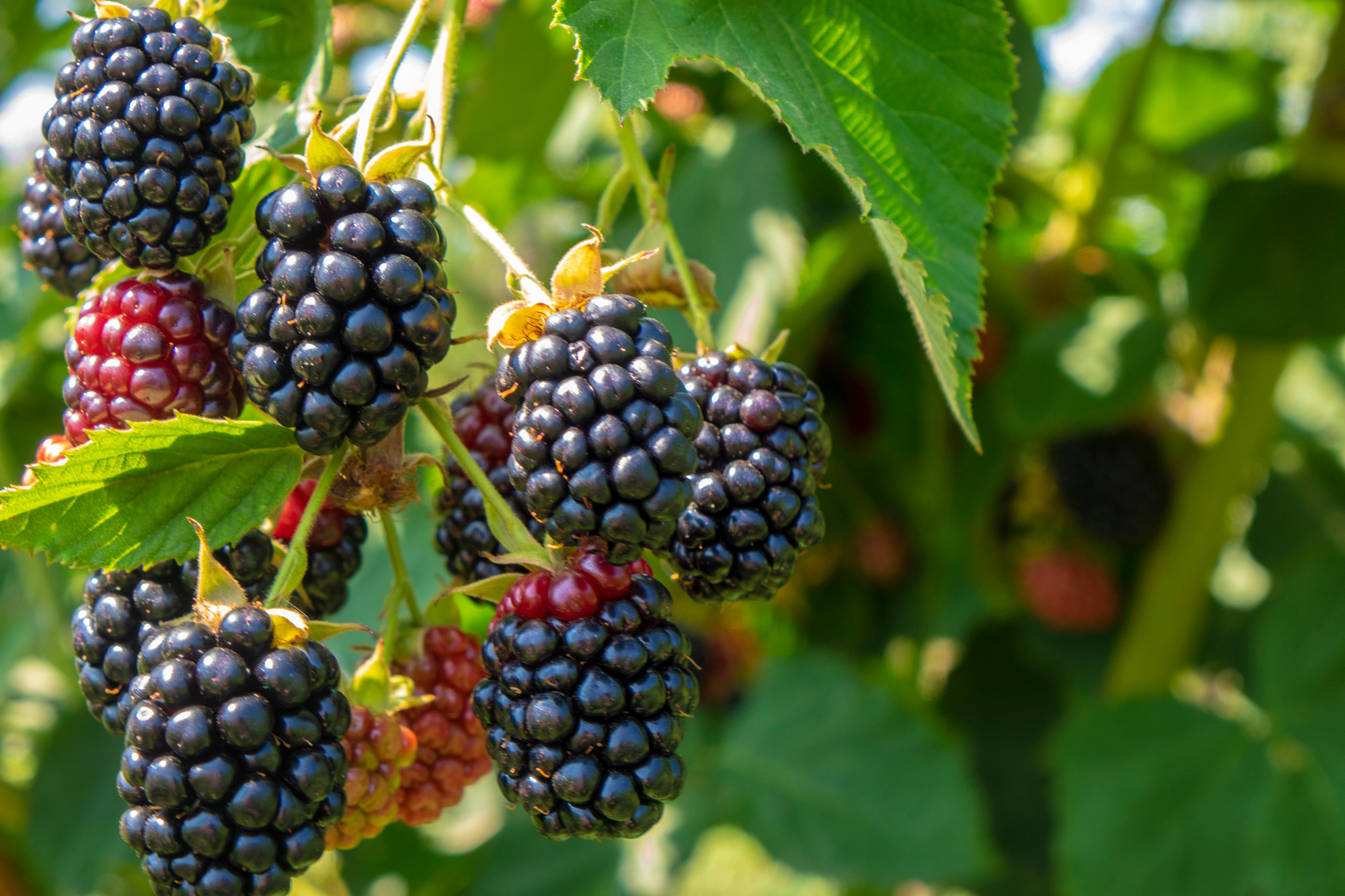Blackberry
Blackberries, known for their sweet, tart flavour and deep purple hue, are a cherished fruit across many parts of the world. While traditionally associated with milder climates, select cultivars have been developed to thrive in regions like Alberta, bringing the joy of blackberry picking and eating to more northern latitudes.

More on Blackberry
About
Blackberries (Rubus spp.) are aggregate fruits, composed of many tiny drupelets, each containing a seed. They're a part of the Rosaceae family, closely related to raspberries. Blackberries prefer sunny, well-drained locations, and while they are often found in warmer climates, breeding efforts have produced cold-hardy varieties suitable for Alberta's more challenging weather conditions. Such cultivars are designed to withstand colder temperatures while still producing succulent, flavourful berries.
History
Historically, blackberries have been a staple in European and North American diets, being harvested in the wild and later cultivated for more consistent yields. In Indigenous cultures, blackberries have been consumed for millennia, and they've also played roles in traditional medicines. The plant's evolution in Alberta is a testament to the ingenuity and perseverance of agricultural specialists and gardeners alike, who saw the potential for blackberries in the province and sought to introduce and adapt cultivars that could flourish there.
Ways To Cook
Blackberries are a culinary delight, versatile in both sweet and savoury dishes. Fresh blackberries can be added to salads, yogurts, or cereals. They shine in desserts, from pies and tarts to jams and jellies. Their rich, tangy flavour complements baked goods like muffins and scones. Moreover, they can be turned into sumptuous sauces that pair beautifully with game meats or poultry. In Alberta, while the growing season might be shorter, the anticipation for ripe blackberries is no less fervent. Those who cultivate them in their gardens often have cherished family recipes, ensuring not a single berry goes to waste. Among the cultivars suitable for Alberta's climate are the 'Illini Hardy' and 'Balsor Black', both of which offer good cold resistance and delicious fruits.
